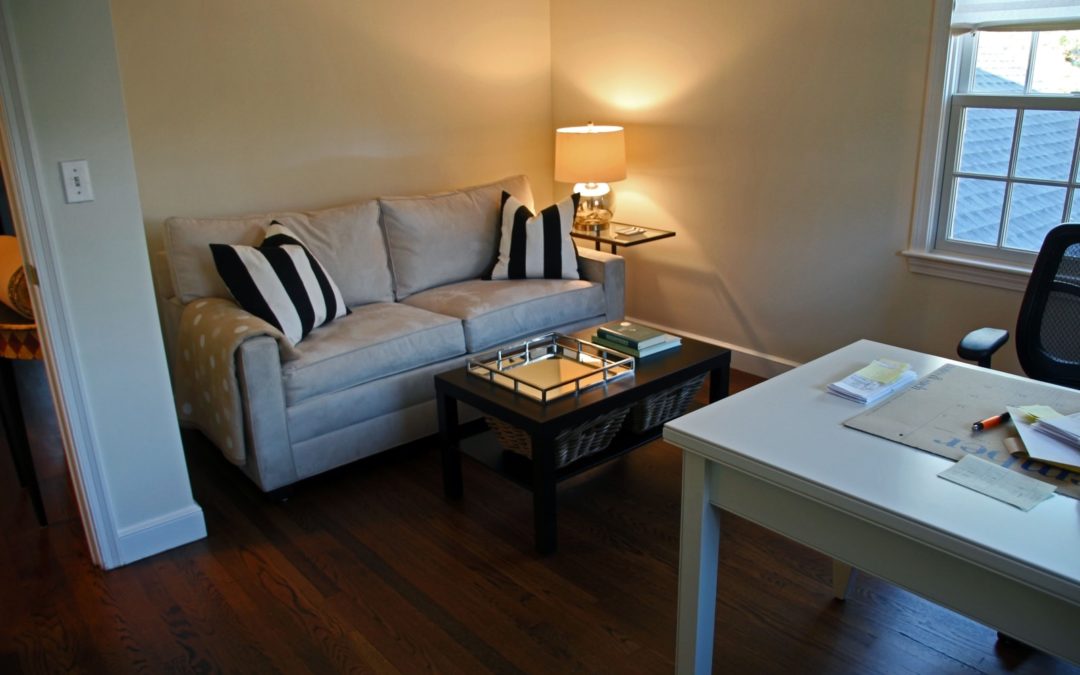Refinishing Hardwood Floors
Today’s hardwood floors are typically treated with polyurethane as a final coating. Polyurethane acts as a protective layer to your floors. For more information when your floors need attention read on:
When Should I Sand or Refinish My Wood Floors?
Sanding or refinishing your hardwood floors is necessary when the luster and shine is lost due to the polyurethane wearing off.
You often notice this when you pull back an area rug and you see a marked difference in the sheen. Gray or dark areas, peeling or lifting of the polyurethane, cupped or warped boards or deep scratches and dents are signs of floor damage and indicate that action should be taken.
What Does The Sanding Process Entail?
Step 1 – Sanding the Floors Smooth
Sanding of hardwood floors will remove a small amount of the top layer of your wood floors, stripping the wood of polyurethane, wax, or stain. This process can remove deep scratches. Your floors will look like new upon completion of the sanding process.
The refinishing process involves using different grits of sand paper to remove any old finish, scratches and/or embedded dirt within the wood floor. This procedure can address any deep scratches on the wood floors. After the hardwood is completely sanded a rotary screening is completed to ensure a smooth surface. The floor is then vacuumed, and tacked (passed over with a dampened towel) to remove any dust, prior to stain or finishing polyurethane being applied.
Step 2 – Application of Stains or Dyes (Optional)
Applying stains or dyes to wood floors can create a look that is unique to your home and fit with your style and décor. Stains and dyes can create a deep dark rich color or a white washed appearance. Whatever the desired product, Duffy Floors color experts work one on one with customers to achieve the perfect tone. The sky’s the limit in creativity.
Step 3 – Application Polyurethane
Polyurethanes are available in three different finishes: satin, semi-gloss and gloss. They are water or oil based. Floors are typically coated with two or three layers of polyurethane with a screening between coatings to ensure a good bond.
How Long Will a Sanding/Refinishing Process Last?
A properly maintained wood floor should last 10 – 15 years between sandings.
Buffing for Maintenance
An easy way to keep your floors looking great, especially in your kitchen, is to have a buffing and re-coating every 3-5 years depending on wear.
Buffing or screening can help prolong the length of time between full sanding or refinishing of your wood floors. Over time, the top protective layer of finish will wear down. This, in turn, leaves the wood more vulnerable to scratches and floors can dull.
The key is to have your floors buffed and re-coated before they get deep scratches or too worn.
Simple Steps to Protect Your Wood Floors
1. Always put felt pads on your furniture to prevent scratches to your floors.
2. Never wet mop your floor. Standing water will damage wood floors.
3. Clean up dirt and debris daily.
4. Walk off mats at doorways will minimize foot traffic dirt being tracked into your home.
5. No high heel policy. High heels can damage your floors.
6. Use Bona Wood Floor Cleaner on your polyurethane treated wood floors. Never use products that contain wax or silicone which can dull the finish on your floors and prevent the polyurethane from adhering with future coatings. Always read the product label but some to avoid are Murphy’s Oil soap, Endust, and Mop and Glow.


